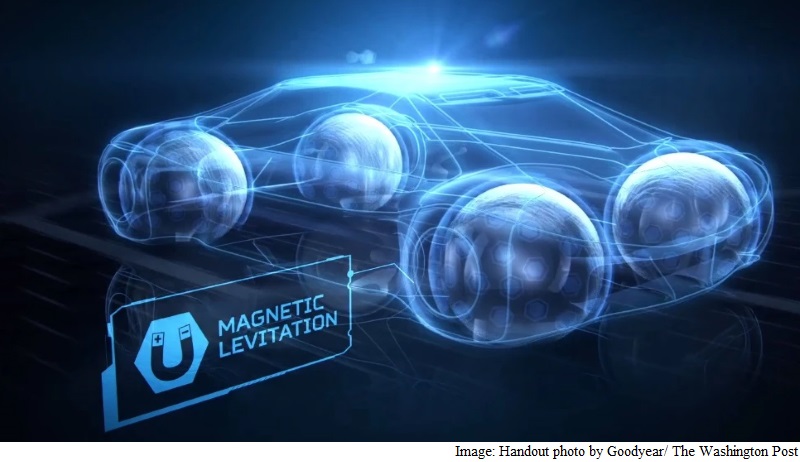- Home
- Others
- Others News
- Goodyear's Radical Idea of What Driverless Car Tires Will Look Like
Goodyear's Radical Idea of What Driverless Car Tires Will Look Like

But one thing generally has gone unchanged on these vehicles the tires.
Goodyear, however, changed that this week at the Geneva International Motor Show, revealing spherical tires as its vision for the tires of future autonomous vehicles. The tires, called the Eagle-360, are essentially large rubber balls.
These tires wouldn't connect to the vehicle's axles; instead they would magnetically levitate under the vehicle. A battery inside the wheels would power their movement. These batteries would charge wirelessly from the car body as well as regenerative braking.
The tire treads would also have unique designs based on a vehicle's location and habits. Does a car drive a lot in the city or on highways? A pattern would be selected to provide the best performance for those circumstances.
The tires would also include sensors that communicate road and water conditions to other vehicles. So the wheels on one car might rotate to use a different part of their tread perhaps one built for wet conditions after receiving word from a car ahead of an approaching slick patch.
The tires would also monitor their own wear and tear, so the 360-degree tires would rotate regularly to spread wear evenly in order to maximize the tire's life.
And for the record, the wheels wouldn't even turn in a traditional sense. The balls would just begin rolling in a different direction. Goodyear points to benefits such as more efficient, densely packed parking lots because cars could turn at 90-degree angles rather than the traditional wider turns that require broader lanes.
© 2016 The Washington Post
Catch the latest from the Consumer Electronics Show on Gadgets 360, at our CES 2026 hub.
Related Stories
- Samsung Galaxy Unpacked 2025
- ChatGPT
- Redmi Note 14 Pro+
- iPhone 16
- Apple Vision Pro
- Oneplus 12
- OnePlus Nord CE 3 Lite 5G
- iPhone 13
- Xiaomi 14 Pro
- Oppo Find N3
- Tecno Spark Go (2023)
- Realme V30
- Best Phones Under 25000
- Samsung Galaxy S24 Series
- Cryptocurrency
- iQoo 12
- Samsung Galaxy S24 Ultra
- Giottus
- Samsung Galaxy Z Flip 5
- Apple 'Scary Fast'
- Housefull 5
- GoPro Hero 12 Black Review
- Invincible Season 2
- JioGlass
- HD Ready TV
- Laptop Under 50000
- Smartwatch Under 10000
- Latest Mobile Phones
- Compare Phones
- OPPO Reno 15 Pro Max
- Honor Win RT
- Honor Win
- Xiaomi 17 Ultra Leica Edition
- Xiaomi 17 Ultra
- Huawei Nova 15
- Huawei Nova 15 Pro
- Huawei Nova 15 Ultra
- Asus ProArt P16
- MacBook Pro 14-inch (M5, 2025)
- OPPO Pad Air 5
- Huawei MatePad 11.5 (2026)
- Xiaomi Watch 5
- Huawei Watch 10th Anniversary Edition
- Acerpure Nitro Z Series 100-inch QLED TV
- Samsung 43 Inch LED Ultra HD (4K) Smart TV (UA43UE81AFULXL)
- Asus ROG Ally
- Nintendo Switch Lite
- Haier 1.6 Ton 5 Star Inverter Split AC (HSU19G-MZAID5BN-INV)
- Haier 1.6 Ton 5 Star Inverter Split AC (HSU19G-MZAIM5BN-INV)

















